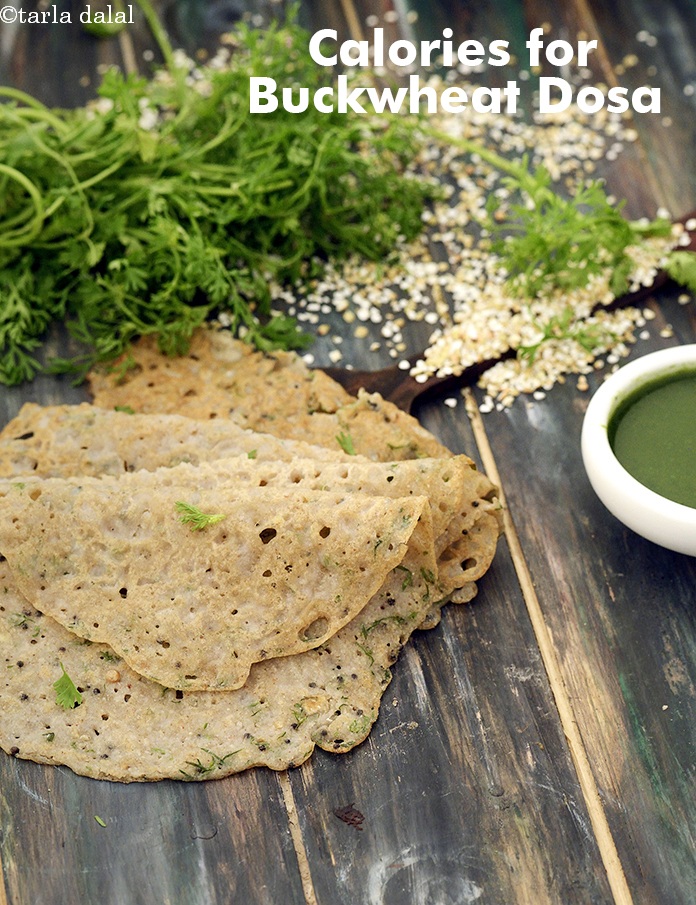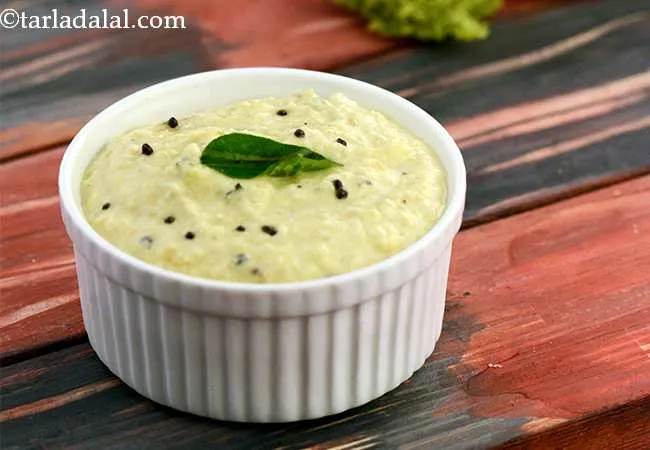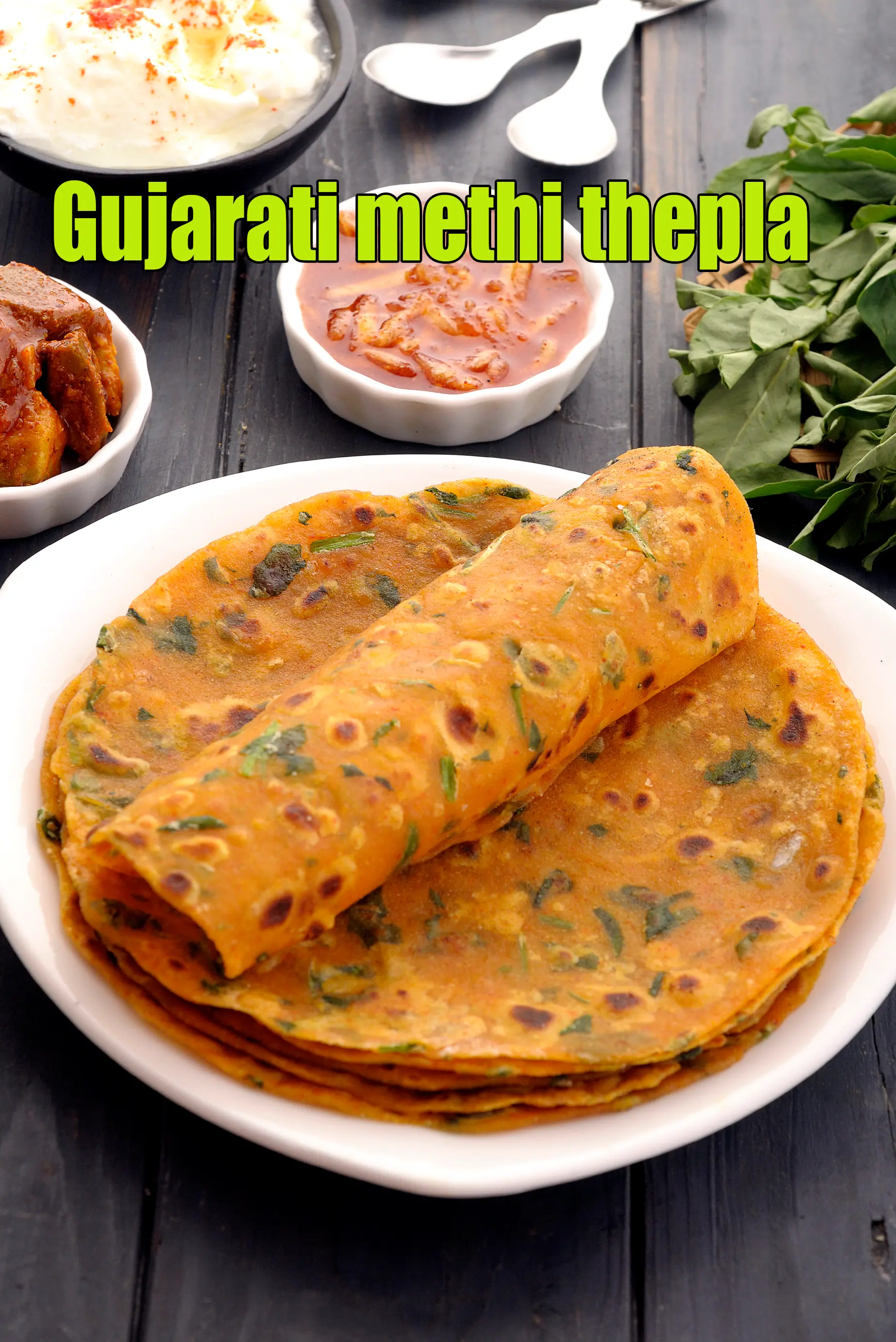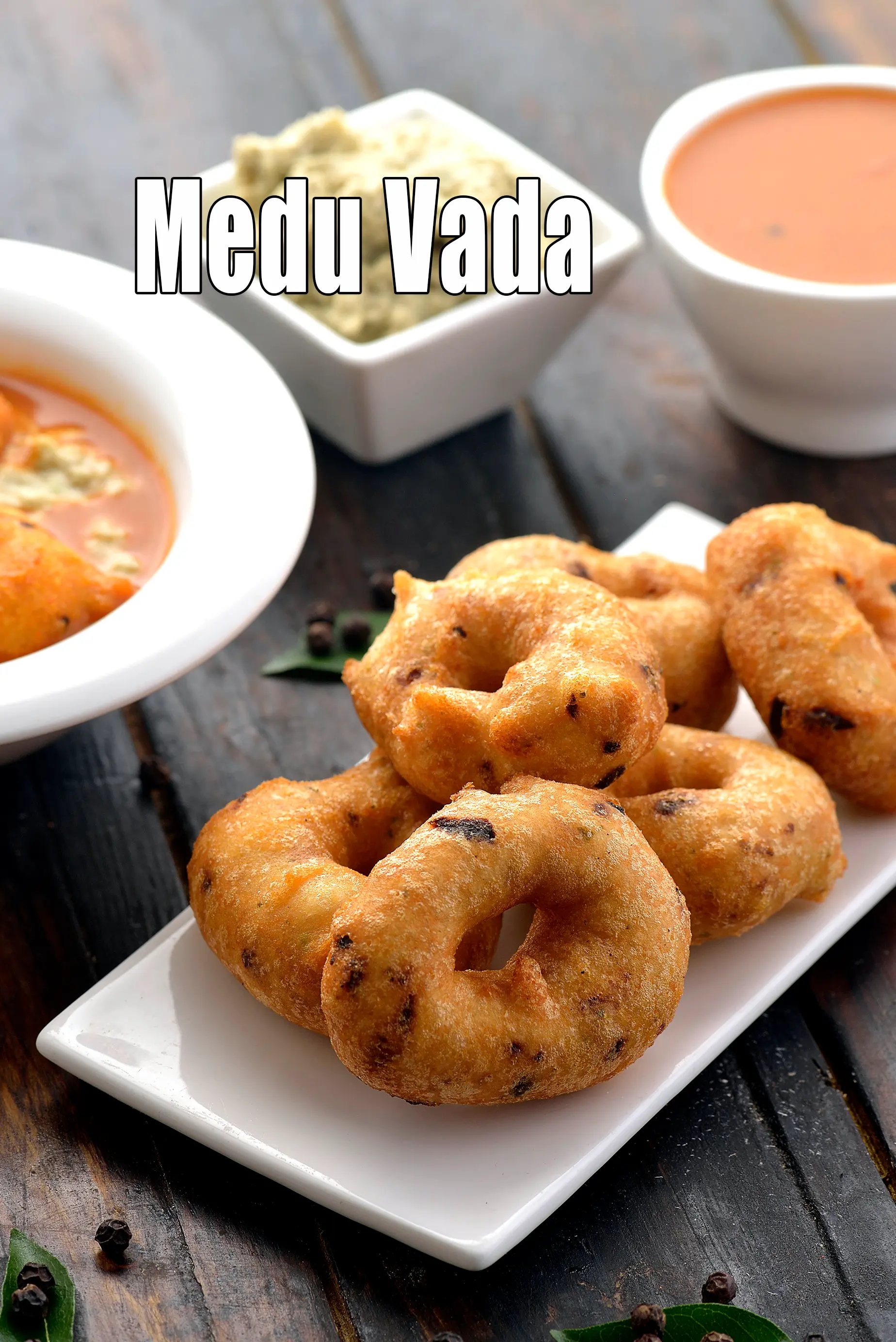Nutritional Facts of Buckwheat Dosa, Calories in Buckwheat Dosa
This calorie page has been viewed 10788 times
Healthy Indian Recipes
Healthy Indian Recipes

Table of Content
How many calories does 1 Buckwheat Dosa have?
One Buckwheat Dosa gives 45 calories. Out of which carbohydrates comprise 24 calories, proteins account for 6 calories and remaining calories come from fat which is 16 calories. One Buckwheat Dosa provides about 2 percent of the total daily calorie requirement of a standard adult diet of 2,000 calories.
45 calories for 1 Buckwheat Dosa, Cholesterol 0 mg, Carbohydrates 6.1g, Protein 1.4g, Fat 1.7g. Find how much fibre, iron, calcium, zinc, magnesium, phosphorus, sodium, potassium, folic acid is present in Buckwheat Dosa.
See Buckwheat Dosa recipe | kuttu dosa | healthy Indian buckwheat crepes | instant buckwheat dosa |
buckwheat dosa known as kuttu dosa is an instant buckwheat dosa which requires no fermentation. Here is an easy and healthy Indian buckwheat crepes prepared with buckwheat and urad dal.
The twist here is that the ingredients are powdered, tempered and then mixed into a batter, which can be cooked immediately into yummy buckwheat dosas.
See why this is a healthy Indian buckwheat crepes? Buckwheat is a very good source of iron and good to prevent anaemia. Rich in folate and good food for pregnant women . Buckwheat keeps your heart healthy and high in fibre and diabetic friendly. So dig into this buckwheat dosa.
Serve the buckwheat dosa fresh off the tava with a chutney of your choice, preferably Green Chutney.
Is Buckwheat Dosa healthy?
Yes, this is a healthy dosa. Made from buckwheat, urad dal, green chillies, coriander and oil.
Let's understand the Ingredients.
What's good.
Buckwheat : Buckwheat is a very good source of Iron and good to prevent anaemia. Rich in folate and good food for pregnant women. Buckwheat keeps your heart healthy and high in fibre and diabetic friendly. Buckwheat is a rich plant based source of protein and excellent option for Vegetarians. See here for 13 benefits of buckwheat.
Urad Dal : 1 cup of cooked urad dal gives 69.30% of folic acid of your daily requirement of folate. The folic acid in urad dal helps your body to produce and maintain new cells, especially red blood cells. Being rich in Phosphorus it works with Calcium to build our bones, high in fibre and good for heart, good for lowering cholesterol and good for diabetes. See here for 10 super benefits of urad dal.
Coriander (kothmir, dhania) : The antioxidants vitamin A, vitamin C and the quercetin present in coriander works towards strengthening our immune system. Coriander is a fairly good source of iron and folate – the 2 nutrient which help in the production and maintenance of red blood cells in our blood. Good for reducing cholesterol and for diabetics. Read 9 benefits of coriander to understand details.
Green Chillies : Antioxidant vitamin C in green chillies protects the body from effects of harmful free radicals and prevents stress. It is probably the high fiber which helps in controlling blood sugar levels. This it is a welcome addition to a diabetic diet. Suffering from anaemia? Add green chillies to your list of iron rich foods too. For complete details see benefits of green chilli.
Can diabetics, heart patients and over weight individuals have Buckwheat Dosa ?
Yes, they can. Both, buckwheat and urad dal are diabetic and heart friendly. For weight loss, this is a great dosa to have as plain rice has simple carbohydrates.
Can healthy individuals have Buckwheat Dosa?
Yes, this is a healthy snack to have as it has ZERO rice.
What is a healthy accompaniment to the Buckwheat Dosa?
Have this with nutritious green chutney recipe which has ZERO sugar used in it made with mint leaves, onions and coriander. Or you can have this healthy coocnut chutney made from coconut and coriander.
Buckwheat Dosa is good for
2. Weight Loss
6. Kids snacks
How to burn 45 calories that come from Buckwheat Dosa?
Walking (6 kmph) = 14 mins
Running (11 kmph) = 5 mins
Cycling (30 kmph) = 6 mins
Swimming (2 kmph) = 8 mins
Note: These values are approximate and calorie burning differs in each individual.
| Energy | 45 cal |
| Protein | 1.4 g |
| Carbohydrates | 6.1 g |
| Fiber | 0.9 g |
| Fat | 1.7 g |
| Cholesterol | 0 mg |
| Vitamin A | 35.2 mcg |
| Vitamin B1 | 0.1 mg |
| Vitamin B2 | 0 mg |
| Vitamin B3 | 0.4 mg |
| Vitamin C | 0.7 mg |
| Folic Acid | 5.8 mcg |
| Calcium | 9.1 mg |
| Iron | 1.2 mg |
| Magnesium | 20 mg |
| Phosphorus | 11.2 mg |
| Sodium | 2.3 mg |
| Potassium | 46.9 mg |
| Zinc | 0.3 mg |

Click here to view Buckwheat Dosa
Calories in other related recipes













